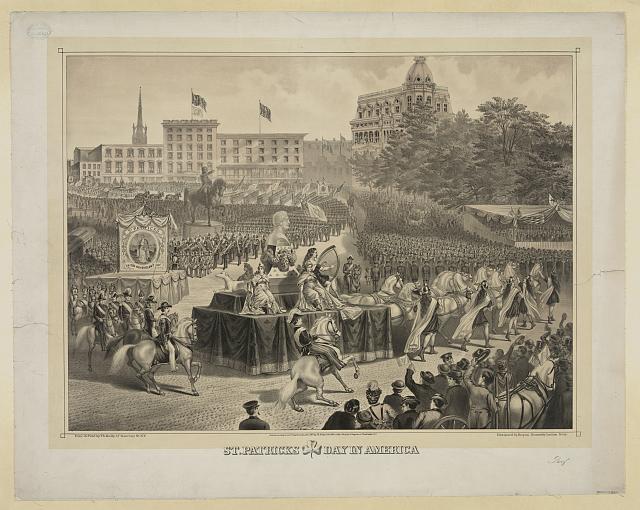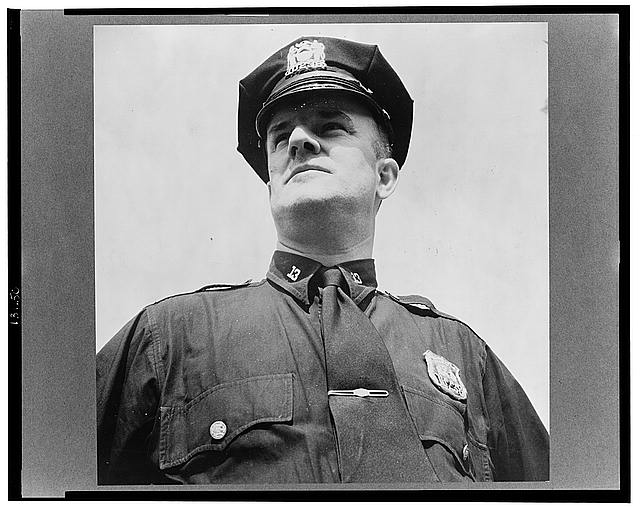Blog Archive
A Parade of Irish Traditions
March is National Irish Heritage Month, where we celebrate the approximately 36.3 million Americans who are descended from Irish immigrants.
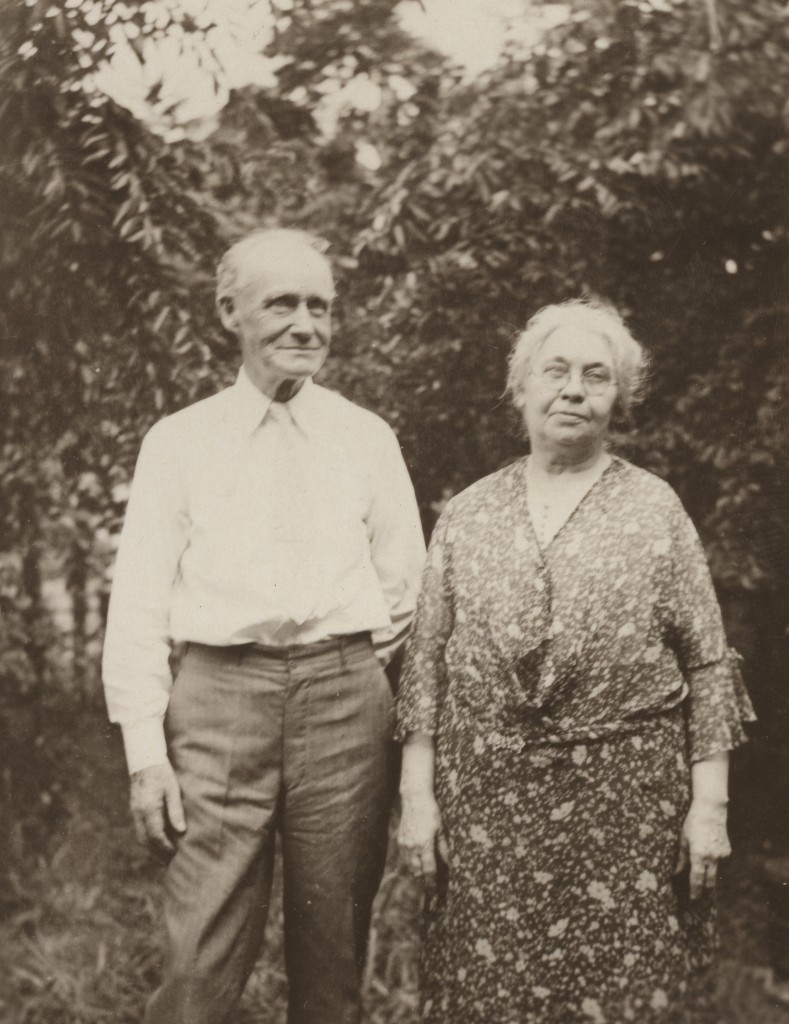
Jane Moore Hanrahan, daughter of Bridget and Joseph Moore, Irish immigrants who lived at 97 Orchard Street in the 1860's. Lower East Side Tenement Museum Photographic Collection.
It’s no coincidence that St. Patrick’s Day is in the middle of Irish Heritage Month. The Feast of Saint Patrick commemorates the arrival of Christianity to Ireland in 5th century. Traditional methods of revelry included feasting, and a céilidh, or a Gaelic gathering of friends often with music and dancing. Perhaps the Moores, an Irish immigrant family who lived in 97 Orchard Street, would have invited friends over for food, drink, and conversation.
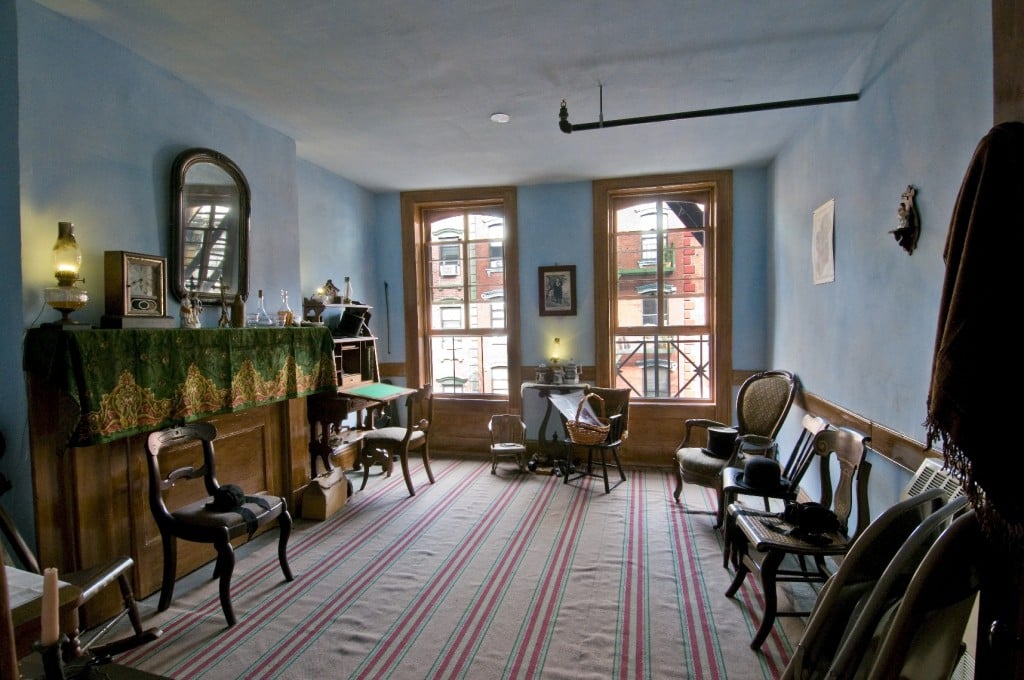
The parlor of the Moore apartment inside the museum. Perhaps the Moores entertained guests here during the Feast of St. Patrick.
Traditions that have lasted through the centuries include wearing green – although St. Patrick’s color was originally blue – and three leafed shamrocks, which may have been what St. Patrick used to explain the Holy Trinity to the polytheistic Irish. Of course, modern celebrations center around the parade, of which New York City’s is the world’s biggest. (Watch the parade live starting at 11:00 AM Eastern Time here!)
St. Patrick’s Day is the most popular Irish tradition in modern America; but did you know that the Irish have shaped American culture in ways that we don’t even think about today?
Catholicism, which many Irish immigrants practiced, was looked upon with scorn in the 19th and early 20th centuries; today is practiced by over 20% of Americans.
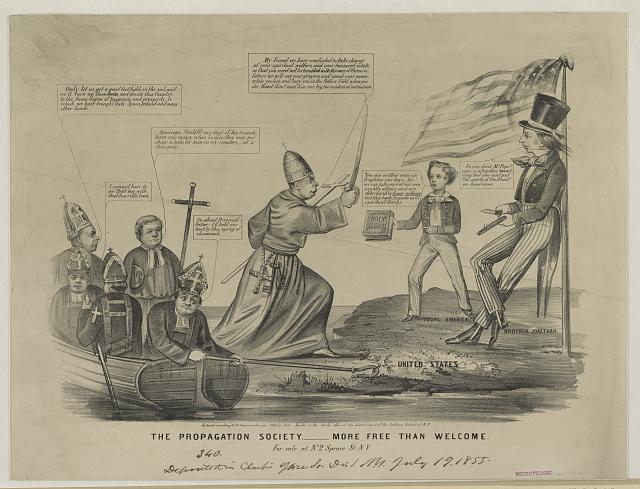
An anti-Catholic cartoon which shows Brother Jonathan (a proto-Uncle Sam) being besieged by Pope Pius IX and five other bishops. This cartoon reflected the natavist views that Catholicism would overtake the United States through Irish immigration.
The terms “paddy-wagon” and “shenanigans” come from derogatory slurs against the Irish, who were made out to be drunks and thugs who would often be arrested.
Of course, on the flip side is the American icon of the Irish cop or fireman. This tradition has deep roots that run nearly 150 years; by the turn of the 20th century, over 80% of the New York City Police Department was of Irish descent.
Traditional Irish music played an integral role in the evolution of American folk and country music. The Scotch-Irish, people from Ulster, moved to the “back country,” (what is now called Appalachia) and brought fiddle music with them. The music intermixed with hymns, English ballads and African-American blues, and eventually became American folk music, and later, contemporary country music.
Hanging a wreath of holly and singing carols during Christmastime began as Irish traditions. Even leaving milk and cookies for Santa comes from Ireland – called “The Laden Table,” families would leave a pitcher of milk and some sweet bread out after the evening meal of Christmas Eve. They would then leave the door unlocked so that Mary and Joseph (or any other travelers) could rest in their home. Of course, today the guest we invite in has reindeer and presents.
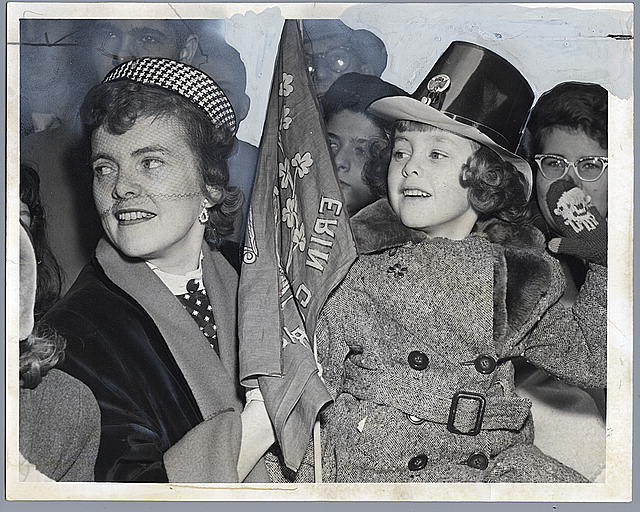
Caroline, 6, and her mother, Marie, as they watch the St. Patrick's Day Parade in 1953. Image courtesy the Library of Congress.
So this St. Patrick’s Day, we’re all a little Irish! Erin go Bragh!
– Posted by Lib Tietjen
